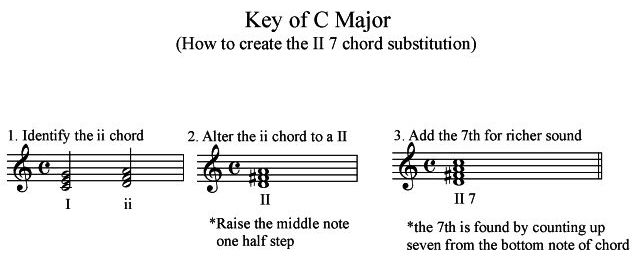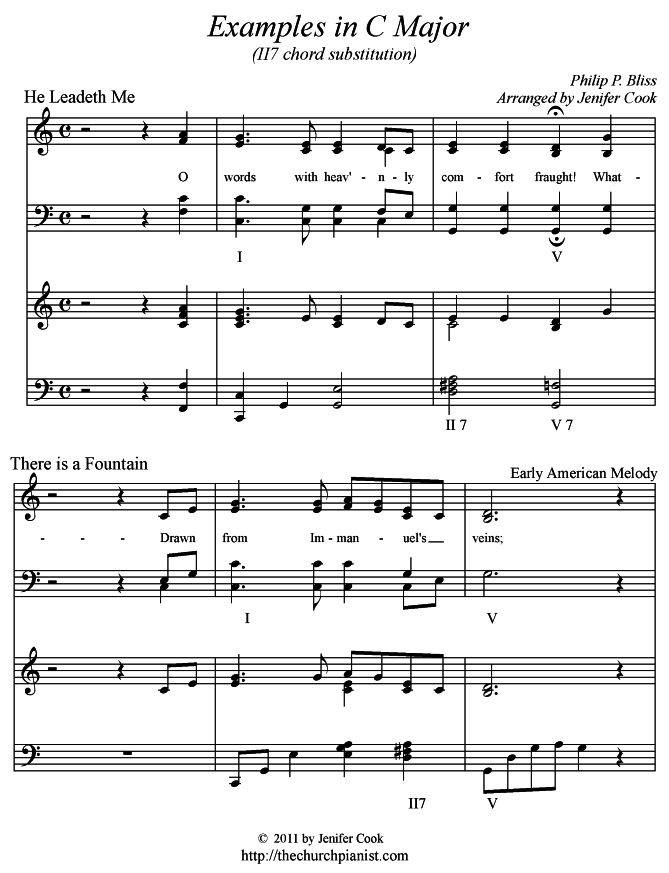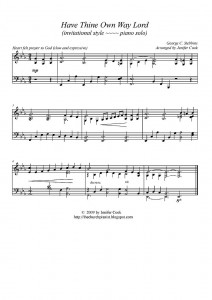Lesson One: The II 7 Chord Substitution
Wednesday, August 17th, 2011A reader writes…
I’ve printed your “Have Thine Own Way, Lord”. How did you know to put a F7 on the 2nd “own” in the first full measure…. Is there a process of knowing what chords are to be uses as substitution and when to use them? ~Elise~Fortunately…yes! 🙂 There’s an endless supply of chord substitutions that can be used…depending on the initial chord scenario.
To begin with, I’ll apply this II 7 chord substitution to the key of C Major for easier application. (Otherwise, it’s like teaching a beginner to play Moonlight Sonata at his first lesson)
So…what’s a II chord?! In simple terms…it’s an altered chord. Normally, the second chord in any major key is a minor chord…thus marked in lowercase roman numerals…ii. For example, in the key of C Major…the ii chord is D-F-A. (D is the second note in the key of C Major which gives the chord its number). But…we can alter the chord (making it a major chord) by raising the middle note of the chord (the note F to an F sharp). * See example below
Now…to create the II 7 chord…just add the 7th note above the bottom note of the chord. *See Example below
Chord Scenario for the II 7 Chord Substitution:
1. When a I chord lasts for at least two or more beats leading into a V or V 7 chord lasting two or more beats. (to allow time for chords to develop) I’ve used the II 7 chord with less beats but in general…it’s best to allow enough beats for chords to sound like they belong and not just randomly thrown in.
In the examples below, I’ve included the vocal and piano score to reflect the changes made in the piano accompaniment. *Reminder: chord substitutions clash with congregational singing due to the note changes.
I use chord substitutions when playing solo offertories, background music for invitation, prelude/postlude, communion and accompanying a vocal or instrumental soloist.
~ ~ ~ ~ ~ ~ ~ ~ ~ ~ ~ ~ ~ ~ ~ ~ ~ ~ ~ ~ ~
In Lesson Two, I’ll share more examples of this II7 chord substitution… including “Have Thine Own Way”.
*Please feel free to ask questions.


